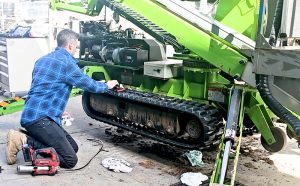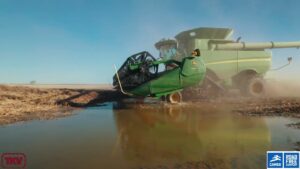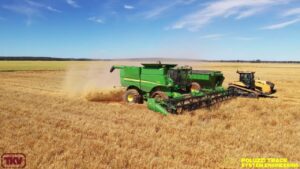There are approximately 85,483 agricultural businesses in Australia that have an Estimated Value of Agricultural Operations (EVAO) of $40,000 or greater (as of June 2018). More than 99% of Australian agricultural businesses are wholly Australian owned, with Australian’s owning 88% of our agricultural land. Wholly Australian owned businesses also control 87% of Australia’s agricultural water entitlements. Food imports only account for 15 per cent of Australia’s daily food supply. As of August 2019, 318,600 people were employed in agriculture, forestry and fisheries.
The Forecast and apparent wetter start to 2021 is a positive for most industries, including red meat, dairy, horticulture and grain producers who will look to further increase production following a strong 2020. Aided by an increased planted area as well as improved seasonal conditions , wheat production is expected to increase up to nearly 28 million tonnes. There are similar positive signs for Barley despite new Chinese tariffs on this commodity, our product has now become attractive to Middle eastern nations, South-East Asia, Japan and South Korea. Our exports may exceed 5 million tonnes despite all the recent doom and gloom.
Reduced canola production in the EU has put Australia in a good position to fill the void over Canada who is our biggest competitor in the Canola game. Canada has an unusually large percentage of Canola that is GM. This will exclude it from the EU, meaning Australia maybe able to off load up to 2 million tonnes into this market.
Increased rainfall during the last 6 months has seen a significant boost in fruit and vegetable production although the shortfall of up to 26,000 seasonal workers is meaning some of this high quality product is laying to waste in the paddock. Airfreight of high value crops such as cherries and avocados is problematic due to decreased airline capacity. We look to our Government to urgently assist in these 2 areas.
Favourable seasonal conditions have brought much needed rainfall for producers and we expect 2021 to be positive from a supply point of view. Increased water availability alongside strong, restoking activity in 2020 and access to feed will help keep production levels strong. The rural bank has painted a generally positive picture for the rural sector for the first 6 months of 2021 despite ongoing trade tensions with China and global uncertainty caused by Covid-19.
Australian farmers can look to 2021 with a strong sense of optimism and with a stronger 2020 year under our belts we can all say there has been a monumental shift from the 2019 year for Australian farmers.


